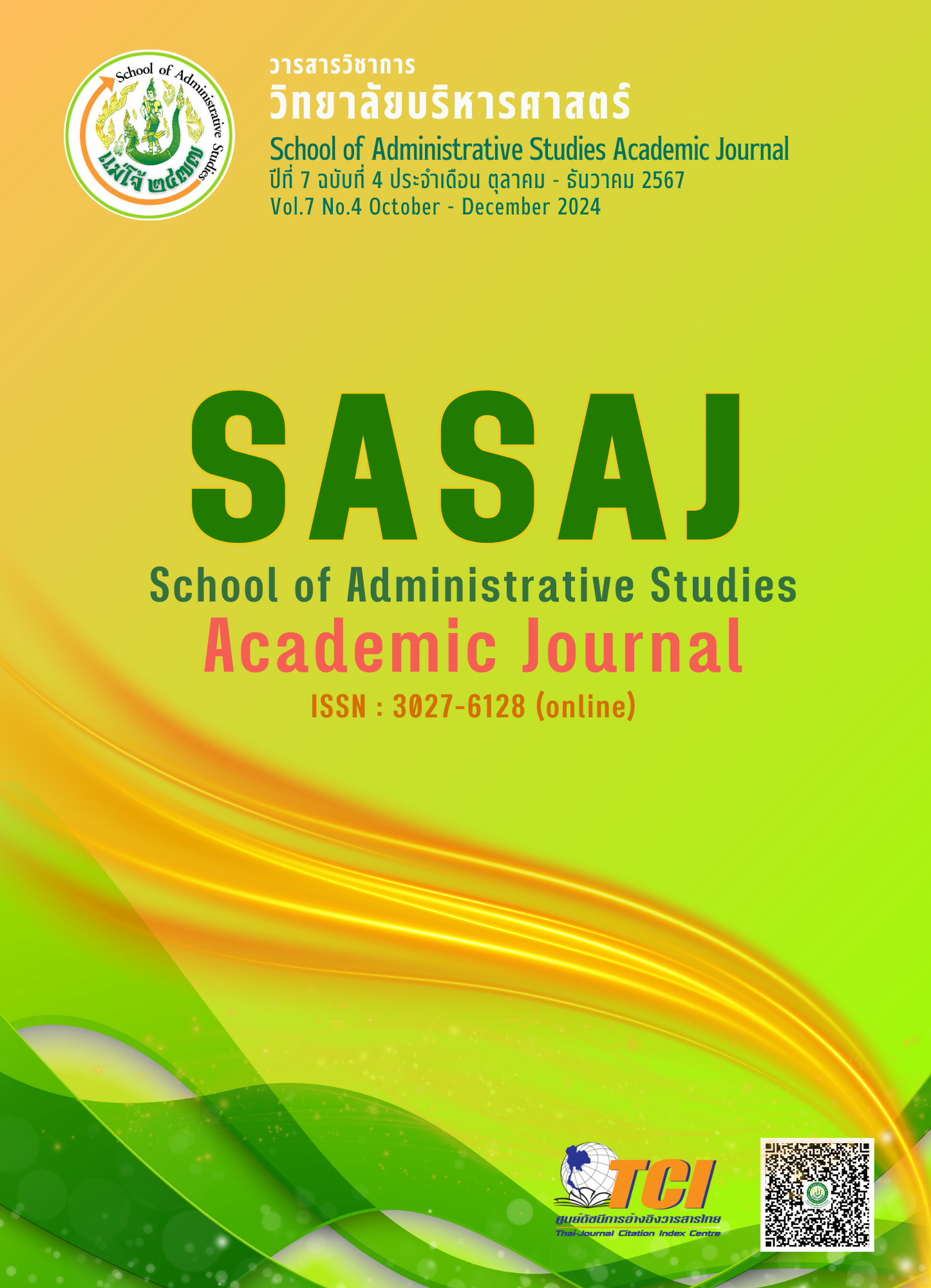Driving iSingle Form Database System Policy of the Ministry of Industry for Implementation in Government Service of the Surat Thani Provincial Industry Office
Main Article Content
Abstract
The iSingle Form system is the central data reporting system of the Ministry of Industry. For industrial factory operators in an online format Help facilitate to report business operations information more easily and conveniently. The objectives of this research are twofold. Firstly, it aims to examine the utilization of the iSingle Form system and the key factors that drive industrial department forward in Thailand 4.0 in Surat Thani province. Secondly, it seeks to create a model to implement iSingle Form system for governmental usage that aligns with the Ministry of Industry's policies towards government implementation of Thailand 4.0. The research design used a mixed methods method. quantitative research Data were collected from documents, personnel, and questionnaires from representatives of 280 industrial plants. Statistics used in the research included percentages, averages, and standard deviations. factor analysis and qualitative research by focus group discussions There were 15 participants in order to bring quantitative research results together to create a model used to drive the iSingle Form in accordance with the Ministry of Industry's policy towards government practice in the Thailand 4.0 era.
The findings of the study from Ministry of Industry's in Suratthani indicates the high level of usage of iSingle Form system among entrepreneurs. However, there remains some challenges in system usage and system performance which requires continuous development. In terms of obstacles, driving toward the government policy involves several factors including regular work planning or training to increase knowledge of related duties and to enhance the potential for providing services to entrepreneurs more effectively. Drawing on group discussions, the study developed a model to drive the use of the iSingle Form system. The USE-D Model requires the joint effort of four factors 1) system users 2) the iSingle Form system 3) the system efficiency and 4) development. The effective coordination of these factors will lead to improved development and increase the usage of iSingle form efficiently.
Article Details

This work is licensed under a Creative Commons Attribution-NonCommercial-NoDerivatives 4.0 International License.
ลิขสิทธิ์
References
กระทรวงอุตสาหกรรม. (2566). แผนปฏิบัติการดิจิทัลของกระทรวงอุตสาหกรรม พ.ศ. 2566–2570. สืบค้นจาก https://www.industry.go.th
ขวัญ เพชรสว่าง. (2559). การศึกษาความเป็นไปได้ ของโครงการตามยุททธศาสตร์ส่งเสริมการสร้างบริการดิจิทัลภายใต้นโยบายดิจิทัลเพื่อเศรษฐกิจและสังคมของประเทศไทย. กรุงเทพฯ: มหาวิทยาลัยรามคําแหง.
ณัฐวรรธน์ อุนนะนันทน์, เอกพิชญ์ ชินะข่าย, นนท์ น้าประทานสุข, และ จริยา โกเมนต์ (2566). การบริหารจัดการที่มุ่งสู่ระบบราชการ 4.0 ของสถานสงเคราะห์เด็กโตกรมกิจการเด็กและเยาวชน กระทรวง การพัฒนาสังคมและความมั่นคงของมนุษย์. วารสารวิชาการวิทยาลัยบริหารศาสตร์, 6(3), 36-50.
ธนพร พวงเปลี้ย. (2565). การบริหารราชการในยุคดิจิทัลของศูนย์ดำรงธรรมอำเภอหนองม่วง. วารสารไตรศาสตร์, 7(1), 1-13.
บุญชม ศรีสะอาด. (2542). วิธีการทางสถิติสำหรับการวิจัย (พิมพ์ครั้งที่ 2). กรุงเทพฯ: สุวีระยาสาส์น.
ษมาวีร์ จันทร์อารีย์, และ ภูริวัจน์ ปุณยวุฒิปรีดา. (2562). ระบบราชการไทยกับข้าราชการในประเทศไทย 4.0. วารสารบัณฑิตแสงโคมคำ, 4(2), 218-232.
สำนักงานเศรษฐกิจอุตสาหกรรม. (2566). ข้อมูลเศรษฐกิจอุตสาหกรรม. สืบค้นจาก https://www.oie.go.th
อนุวัฒน์ ทองแสง, อนุพันธ์ เรืองพรวิสุทธิ์, ปุณณดา ทรงอิทธิสุข, และ โชติ บดีรัตน์. (2565), นโยบายการบริหารกิจการสาธารณะยุคดิจิทัล. วาสาร มจร อุบลปริทรรศน์, 7(2), 127-142.


